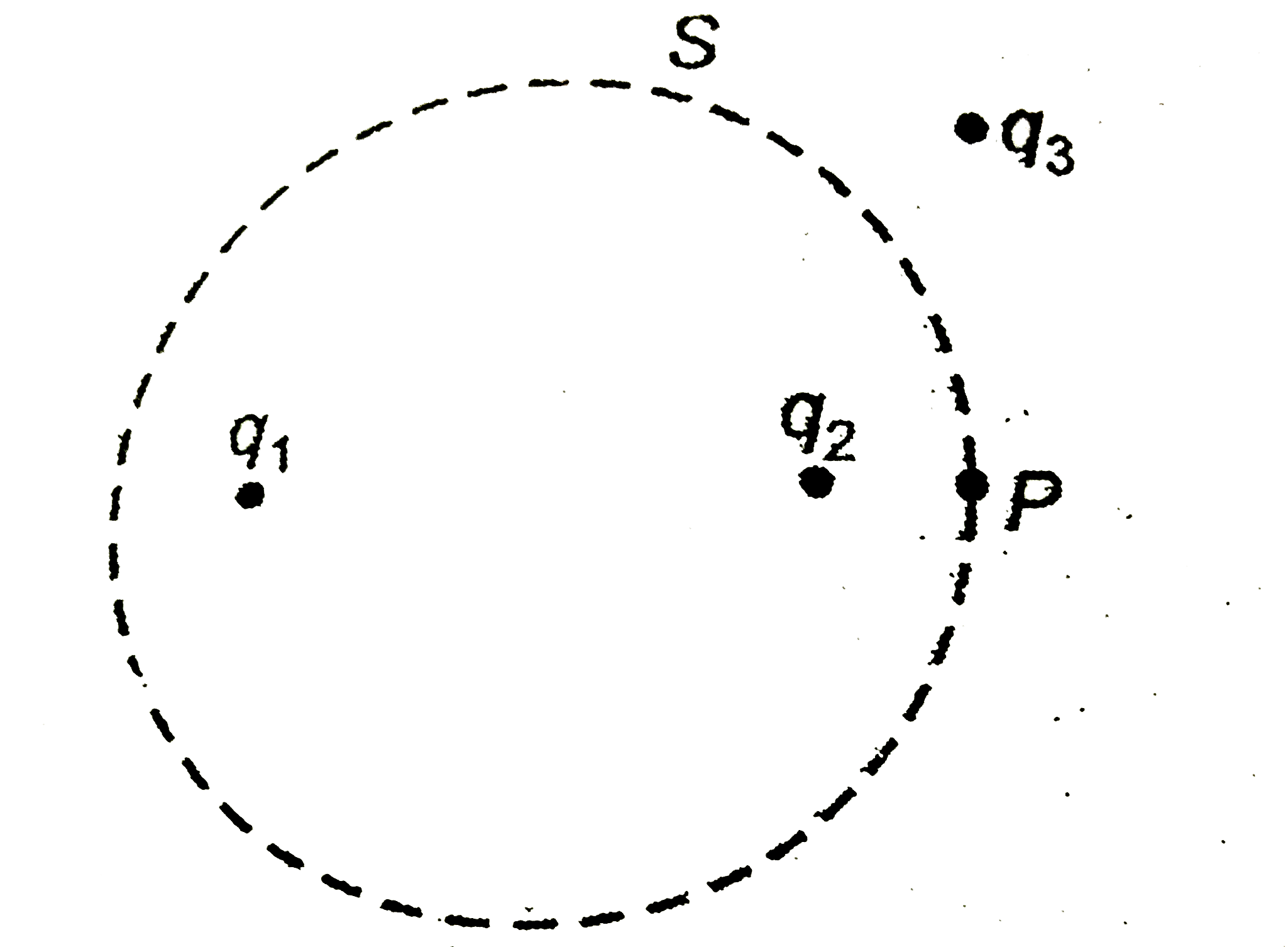If the net electric field flux passing through a closed surface is zero, then the electric field at the surface will be
0
same at all places
depends upon the location of points
infinite
The correct Answer is:C
depends upon the location of points
Topper's Solved these Questions
Similar Questions
Knowledge Check
If the net electric flux through a closed surface is zero, then we can infer
Ano net charge is enclosed by the surfaceBuniform electric field exists within the surfaceCelectric potential varies from point to point inside the surfaceDcharge is present inside the surfaceIf the flux of the electric field through a closed surface is zero ,
(i) the electric field must be zero everywhere on the surface
(ii) the electric field may be zero everywhere on the surface
(iii) the charge inside the surface must be zero
(iv) the charge in the vicinity of the surface must be zeroA(i),(ii)B(ii),(iii)C(ii),(iv)D(i),(iii)Three point charges are placed as shown in the figure. S is a gaussian surface ϕ is the net flux passing through surface A and E be the electric field at point P on the surface, then
 AFlux ϕ is due to q1 and q3 onlyBFlux ϕ is due to q1 and q2CElectric field at point P is due to q1 and q2 onlyDFlux ϕ is due to q3 only
AFlux ϕ is due to q1 and q3 onlyBFlux ϕ is due to q1 and q2CElectric field at point P is due to q1 and q2 onlyDFlux ϕ is due to q3 only
If the flux of the electric field through a closed surface is zero,
View SolutionIf the flux of the electric field through a closed surface is zero ,
(i) the electric field must be zero everywhere on the surface
(ii) the electric field may be zero everywhere on the surface
(iii) the charge inside the surface must be zero
(iv) the charge in the vicinity of the surface must be zero
View SolutionThe net flux passing through a closed surface enclosing unit charge is
View SolutionThe net flux passing through a closed surface enclosing unit charge is
View SolutionAssertion: Electric flux represents the number of electric lines passing normally through the given surface in the electric field.
Reason: Electric flux through a surface is given as
ϕ=qε0
View Solution
